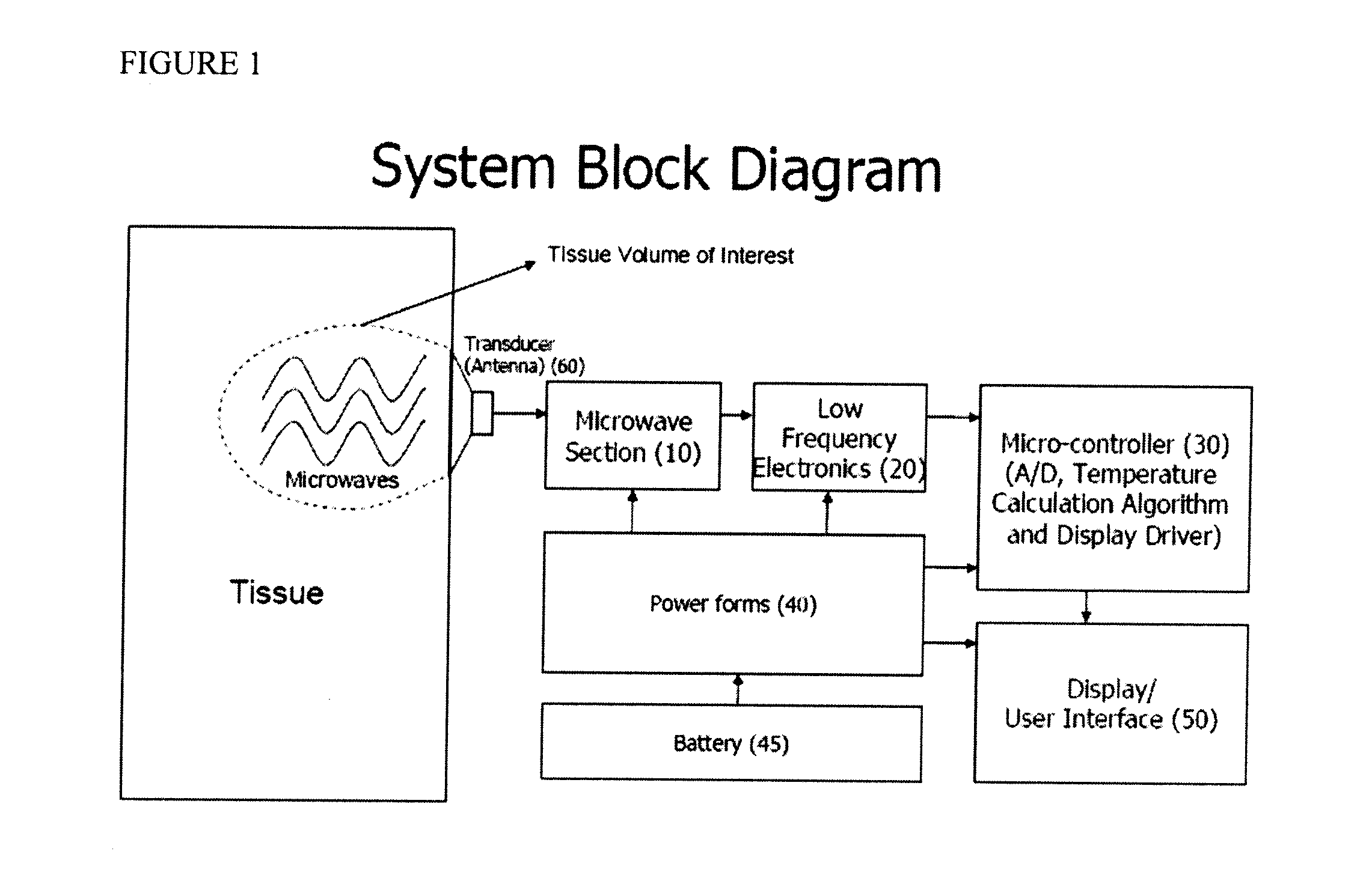Devices and Methods for Exercise Monitoring
- Summary
- Abstract
- Description
- Claims
- Application Information
AI Technical Summary
Benefits of technology
Problems solved by technology
Method used
Image
Examples
example 1
This study was designed to compare use of a radiometer device during exercise with measurement of body temperature by mouth (PO).
Four runners (SV1, MS1, RV1, RV2) were asked to run on a treadmill at a rate at which they would fatigue after 30 minutes but to keep running until fatigue. After 30 minutes of constant speed running, the runners were asked to cool down slowly at a comfortable pace. PO temperatures were taken using a Vick's Flex Tip thermometer that was tested against a warm water bath at 40 degrees Celsius. The runners had to place the thermometer in their mouths under their tongues while running. A reader records the radiometer temperature and PO temperature.
The microwave radiometer was calibrated against fixed temperature water baths at 30 and 40° C. A radiometer antenna was affixed to the chest of the subjects using a large neoprene strap just underneath the left nipple. A cord connected the antenna to the electronics and the data logging PC.
Runners ran for 25, 35, 35 ...
example 2
This study was designed to compare use of a radiometer device during exercise with measurement of heart rate using a heart rate monitor (HR).
Four runners (MS2, I1, RV3, GS1) were asked to wear a chest-strap type heart rate monitor (Timex) and the radiometer antenna on their chests. They were asked to reach a target heart rate running on a treadmill which they could sustain for 30 minutes as constantly as possible. A reader would record and announce the heart rate on request and the radiometer temperature.
The microwave radiometer was calibrated against fixed temperature water baths at 30 and 40° C. A radiometer antenna was affixed to the chest of the subjects using a large neoprene strap just underneath the left nipple. A cord connected the antenna to the electronics and the data logging PC.
Three runners ran for 30 minutes and one runner ran for 19 minutes. Average HR above baseline during run was 92±2 beats per minute. Peak radiometer temperatures were achieved at an average 26±3 mi...
PUM
 Login to View More
Login to View More Abstract
Description
Claims
Application Information
 Login to View More
Login to View More - R&D
- Intellectual Property
- Life Sciences
- Materials
- Tech Scout
- Unparalleled Data Quality
- Higher Quality Content
- 60% Fewer Hallucinations
Browse by: Latest US Patents, China's latest patents, Technical Efficacy Thesaurus, Application Domain, Technology Topic, Popular Technical Reports.
© 2025 PatSnap. All rights reserved.Legal|Privacy policy|Modern Slavery Act Transparency Statement|Sitemap|About US| Contact US: help@patsnap.com



